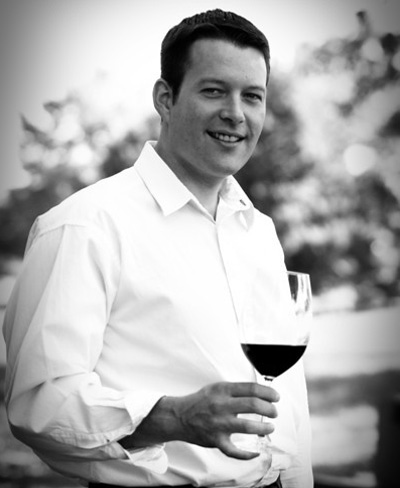

You reported that your wine prices have gone up but sales have remained steady.
We actually had the best year ever last year—it’s not that we were just holding steady; we were breaking records. I think that a lot of diners have been feeling very conservative with their dollars, and so they are wanting a consistent, solid [restaurant] rather than a new place. It’s like, “If I’m going to spend $100, I’m going to a place that’s really going to stand up; I’m going to go for consistency over newness.”
Does that attitude extend to wine?
In our particular environment, people are pretty adventurous with their wine dollars, but I think again it’s because we get out the decanters, we have the glassware, we send our staff to Italy, so [there’s] trust. They don’t feel like they have expendable money to toss around with wine, but they are more generous with spending when they have the trust. It’s like with Brunello: We know it’s more expensive than Chianti Classico but we’re willing to go there now. Our prices have gone up a bit—we’ve allowed for an increase since we really held prices tight for the past few years—and we’ve not seen much push back.
Franciacorta makes your Top Ten, but not prosecco.
We’ve definitely seen an increase on Franciacorta. Part of it is that some of our staff have gone there, and so everyone is really behind it, but I’ve also seen a strengthening of the sparkling category. We’re still selling a lot of Prosecco, but now there’s more interest in more high-quality bubbles. It’s a little of the ubiquity syndrome with prosecco, like with malbec or shiraz—there’s a location disconnect; any one will do; they aren’t discerning about the brand. Now people are looking for better quality, and toastier, nuttier styles, and you’re just not going to find that in prosecco.
Chianti tops your list.
Chianti is still rocking strong, Chianti Classico in particular, and Rodano in particular. I swear, if I pour that wine for 1,000 customers, 999 are going to say they love the wine. Chianti Classico is just such a satisfying wine; you can pour it for people who don’t know it and they always seem really happy with it, especially at the price.
How about your namesake, Barolo?
A lot of people are lured here by the Barolo; we’re selling a ton. Some of the prices have actually come down, so that makes it more attractive. Also, I’ve found that now a lot of people have been to Piedmont; they know the wine. At the same time, a lot of people seem to equate Barolo to the cabernet sauvignon of Italy, so I always need to survey the table. So many people think of Barolo as the Italian equivalent of Bordeaux or cabernet sauvignon; I’d say 50 percent are in that camp. I always say Barolo is more Burgundy-meets-cabernet: It doesn’t deliver the color or weight of cabernet sauvignon, but it does deliver the structure—so if they like structure, it’s a good choice, but if they are looking for a dense, broader wine, they will not be so happy with it.
What about Piedmont’s other varietals—do you sell any pelaverga?
Every time I put things like pelaverga on the list, they get lost. If anything, people go for Dolcetto di Dogliani and Barbera d’Asti—barbera especially, as there are so many different styles and they come in at a good price point.
And in whites?
Gavi is a strong white wine category for us—a success with those who like sauvignon blanc, pinot grigio, those who are looking to get away from chardonnay styles. And for those who’ve had their fill of pinot grigio. Pinot grigio has become this catchall category, like prosecco: people don’t differentiate.
What about this Cottat Sancerre in the midst of all the Italians that make up your Top Ten?
I sell gallons and gallons of Sancerre! Part of it is personal—I love Sancerre. But I list it because I don’t find that Italy has rung anyone’s bell with sauvignon, so I’m going to go to France. I’d rather take diners to the home place than offer an Italian version just for the sake of being Italian. I have Austrian grüner veltliner and German riesling, too—things that aren’t easily replicated elsewhere.
Do people order the German riesling and Austrian grüner?
I didn’t sell a drop of them five years ago. Now I’m shocked at how much of the higher acid, crisp whites we sell. It’s not like I’m pushing them; I just think it’s nice to have options. They are lifting off just by us throwing them over the home plate.
What other trends have you seen over the last year?
People going after lagrein, and nero d’Avola for sure—people never even mentioned the word before, and now they come in asking for it. I’ve been thinking that I might have to bring more to the wine list. Part of it might be the conservative prices: they are probably $10 to $20 on the shelf, $20 to $50 on a list, and they deliver well. People have translated malbec and shiraz to nero d’Avola.
The Guidalberto brings up your Top 10 at #10. Do super Tuscans still sell well?
Hugely—we are getting a lot of cabernet and Bordeaux drinkers looking for an $80 to $150 bottle. If we say Sassicaia, their eyes may begin to roll, but then we say, “this is the little brother” and they are interested. I can’t keep the Guidalberto in stock; I’m buying it weekly. The $180 to $200 market is no more, with all the layoffs and department closings, but people do seem to feel they can justify a $100, $125 super Tuscan. If they spend the money they don’t want to feel like they are chasing a trend; they want to feel like they are throwing their money behind something with pedigree. That’s really comforting to a lot of people in this environment.
is W&S’s editor at large and covers the wines of the Mediterranean and Central and Eastern Europe for the magazine.
This is a W&S web exclusive. Get access to all of our feature stories by signing up today.
















